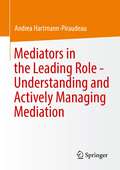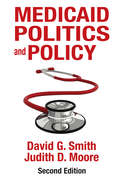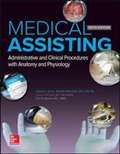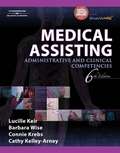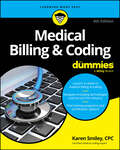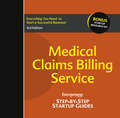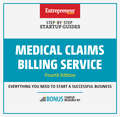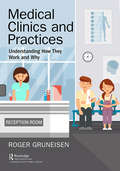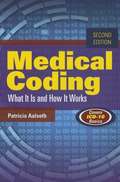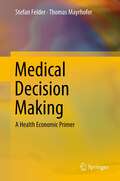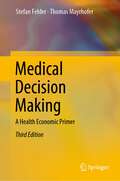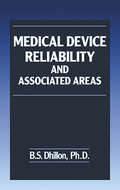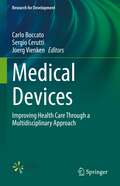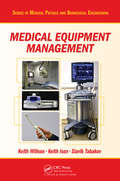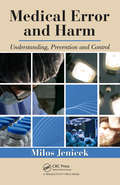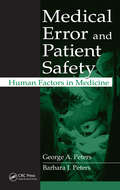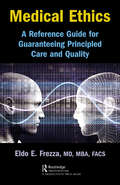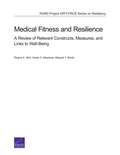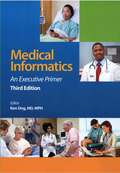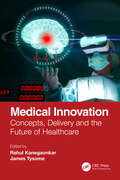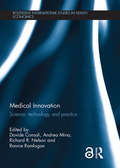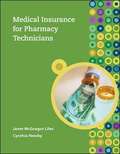- Table View
- List View
Mediators in the Leading Role - Understanding and Actively Managing Mediation
by Andrea Hartmann-PiraudeauThis book is intended for readers interested in mediation, negotiation, and other methods of conflict resolution. The use of mediation is widespread, but research into its impact is still in its infancy. If mediation is a way of resolving conflicts of our time, then mediators have a responsibility: on a small scale, in resolving acute conflicts, and on a large scale, in shaping and establishing a new form of social dialogue. They should know what they are doing. They should know which interventions to use and when, and what effect they have. With its research results, this book helps to strengthen the relevant field of mediation through scientific findings and to derive recommendations for action for mediators from the results.This book is a translation of the original German 1st edition Mediatoren in der Hauptrolle – Mediation verstehen und aktiv steuern by Andrea Hartmann-Piraudeau, published by Springer Fachmedien Wiesbaden GmbH, part of Springer Nature in 2020. The translation was done with the help of artificial intelligence (machine translation by the service DeepL.com). A subsequent human revision was done primarily in terms of content, so that the book will read stylistically differently from a conventional translation. Springer Nature works continuously to further the development of tools for the production of books and on the related technologies to support the authors.
Medicaid Politics and Policy
by David G. SmithThe story of Medicaid comes alive for readers in this strong narrative, including detailed accounts of important policy changes and extensive use of interviews. A central theme of the book is that Medicaid is a "weak entitlement," one less established or effectively defended than Medicare or Social Security, but more secure than welfare or food stamps.In their analysis, the authors argue that the future of Medicaid is sound. It has the flexibility to be adapted by states as well as to allow for policy innovation. At the same time, the program lacks an effective mechanism for overall reform. They note Medicaid has become a source of perennial political controversy as it has grown to become the largest health insurance system in the country.The book's dual emphasis on politics and policy is important in making the arcane Medicaid program accessible to readersand in distinguishing policy grounded in analysis from partisan ideology. This second edition features a new preface, three new chapters accounting for the changes to the Affordable Care Act, and an updated glossary.
Medical Assisting: Administrative And Clinical Procedures With Anatomy And Physiology
by Kathryn A. Booth Terri D. Wyman Leesa WhickerThe medical assisting profession is soaring to new heights with the expansion and diversity of roles and changes in the healthcare environment. Today’s medical assistants must juggle many tasks in the medical office to keep up with the changes. The seventh edition of Medical Assisting:Administrative and Clinical Procedures with Anatomy and Physiology was updated to help students as well as instructors learn these ever-changing tasks and stay current in the healthcare environment.
Medical Assisting: Administrative and Clinical Competencies
by Barbara A. Wise Cathy Kelley-Arney Connie Krebs Lucille KeirThis textbook presents the administrative and clinical skills needed by medical assistants. A lengthy chapter describes the anatomy and physiology of the human body. Two included CD-ROMs contain pictures and instructions for performing duties in the medical office and the clinic. The fifth edition adds a section on alternative therapies. Annotation c. Book News, Inc. , Portland, OR (booknews. com)
Medical Billing & Coding For Dummies
by Karen SmileyThe essential guide for medical billing professionals, updated for ICD-11 standards Medical Billing & Coding For Dummies will set you up for success in getting started as a medical biller and coder. To ensure data accuracy and efficient data processing, medical offices need professionally trained coders to handle records. This book provides prospective allied health professionals with everything they need to know to get started in medical billing and coding as a career. In addition to an introduction to the basics of medical coding, you'll get information on how to find a training course, meet certification requirements, and deal with government agencies and insurance companies. Learn about the standard practices in the medical billing industry and get up to speed on the ethical and legal issues you're likely to face on the job. This accessible guide is a great entry point—and a great refresher—for anyone interested in the medical billing and coding profession. Get a primer on your career options in the field of medical billing Learn coding practices for telehealth, viral outbreaks, and other emerging issues Update your knowledge of the changes between ICD-10 and ICD-11 coding systems Find training programs and explore your options for certification This Dummies guide is an accessible entry point for prospective professionals looking get a jump on their new career, and current professionals intent on staying up-to-date in this flexible and growing field.
Medical Claims Billing Service
by Entrepreneur MagazineThe world of medical treatment has changed dramatically in the past few years. Doctors are overwhelmed by the maze of complicated claim forms and insurance policy procedures. They need time to focus on their patients, but with complicated billing procedures from private and government-administered insurance companies, HMOs and PPOs, they're often having to worry about whether they'll ever get paid for the services they provide. And this is where you come in: There's a growing need for outside help--a need that you can easily fill, working from your home.As a medical claims biller, you can earn a good income managing claims for doctors and other health-care specialists. There's no special training or experience needed, and start-up costs are minimal. All you really need is a computer, a printer, a modem and claims processing software.It's an ideal "starter" business because you decide its size and scope. You can specialize in certain fields--chiropractic, pediatric or dentistry, for example--and determine exactly how many health-care professionals you want to accept as clients.In this guide, we'll help you create the medical-claims billing business that best suits your needs. You'll learn about the different ways you can specialize, the health organizations you'll be dealing with, terminology to help you get a head start, and the software that will make you a doctor's best friend.The First Three YearsIn addition to industry specific information, you'll also tap into Entrepreneur's more than 30 years of small business expertise via the 2nd section of the guide - Start Your Own Business. SYOB offers critical startup essentials and a current, comprehensive view of what it takes to survive the crucial first three years, giving your exactly what you need to survive and succeed. Plus, you'll get advice and insight from experts and practicing entrepreneurs, all offering common-sense approaches and solutions to a wide range of challenges. Pin point your target market Uncover creative financing for startup and growth Use online resources to streamline your business plan Learn the secrets of successful marketing Discover digital and social media tools and how to use them Take advantage of hundreds of resources Receive vital forms, worksheets and checklists From startup to retirement, millions of entrepreneurs and small business owners have trusted Entrepreneur to point them in the right direction. We'll teach you the secrets of the winners, and give you exactly what you need to lay the groundwork for success.BONUS: Entrepreneur's Startup Resource Kit!Every small business is unique. Therefore, it's essential to have tools that are customizable depending on your business's needs. That's why with Entrepreneur is also offering you access to our Startup Resource Kit. Get instant access to thousands of business letters, sales letters, sample documents and more - all at your fingertips!You'll find the following:The Small Business Legal ToolkitWhen your business dreams go from idea to reality, you're suddenly faced with laws and regulations governing nearly every move you make. Learn how to stay in compliance and protect your business from legal action. In this essential toolkit, you'll get answers to the "how do I get started?" questions every business owner faces along with a thorough understanding of the legal and tax requirements of your business.Sample Business Letters1000+ customizable business letters covering each type of written business communication you're likelyto encounter as you communicate with customers, suppliers, employees, and others. Plus a complete guide to business communication that covers every question you may have about developing your own business communication style.Sample Sales LettersThe experts at Entrepreneur have compliled more than 1000 of the most effective sales letters covering introductions, prospecting, setting up appointments, cover letters, proposal letters, the all-important follow-up letter and letters covering all aspects of sales operations to help you make the sale, generate ...
Medical Claims Billing Service: Step-By-Step Startup Guide
by The Staff of Entrepreneur Media Charlene DavisLAUNCH A CAREER IN MEDICAL CLAIMS BILLINGThe market for medical claim billers is growing exponentially. With legions of providers and an ever-expanding patient pool, health-care industry spending is expected to grow by 5.8 percent each year through 2024. By then, health-care spending will total $5.43 trillion and account for 19.6 percent of the gross domestic product. So let there be no doubt: Health care is big business and its growth shows no signs of slowing. This makes it the perfect time to start your own medical claims billing service.
Medical Clinics and Practices: Understanding How They Work and Why
by Roger GruneisenA hospital can be a private or public sector building where patients are admitted for acute treatment. On the other hand, a clinic is a hub of healthcare activity and a place where care providers interact with patients, prescribe medicine, and provide care instructions on what to do after leaving the clinic. Both sites have different and specific operational management needs and requirements. This book serves as a guide to new consultants, management engineers, administrators, and sales professionals seeking to assess simple clinics or medical practice operations. In addition to providing important information about the various aspects of managing a clinic or medical practice, each chapter explains common operating practices seen today and gives some indication of good or better practices. To organize the chapter flow, the chapters are simplified into the typical flow of how a patient moves through the system from patient access to registration to discharge and is presented in a ‘Fact Finder’ format. In this format, the author answers important questions: What is a care team? What kind of physical space does the practice need? What about equipment and technology needs? Finally, the author concludes with key infrastructure concepts, such as leadership and management systems, integration into larger systems, and key measurements. All topics important to those working in or servicing the ambulatory market.
Medical Coding: What It Is and How It Works (Second Edition)
by Patricia T. AalsethIn clear and straightforward language, Medical Coding: What It Is and How It Works, Second Edition provides an overview of the evolution of medical coding and all the various coding systems, how they relate, and how they function. Reasoning and consequences of the delayed ICD-10 implementation are explained along with a sound overview of the ICD-10-CM and PCS classification systems. For those contemplating a career in the coding field, this book is ideal as a basic orientation. Other individuals in healthcare management and administration will also benefit from a basic understanding of how coding works. Unlike other publications that focus only on coding, this book integrates coding guidelines and principles into the billing and reimbursement process, giving the student a more practical foundation in the rationale for correct coding. Healthcare fraud and abuse is addressed as well, to assure that readers understand ethical concerns inherent in coding for reimbursement. Instructor Resources: Instructor's Manual, PowerPoint slides, Test Bank
Medical Decision Making
by Stefan Felder Thomas MayrhoferThis textbook offers a comprehensive theory of medical decision making under uncertainty, combining informative test theory with the expected utility hypothesis. The book shows how the parameters of Bayes' theorem can be combined with a value function of health states to arrive at informed test and treatment decisions. The authors distinguish between risk neutral, risk averse and prudent decision makers and demonstrate the effects of risk preferences on physicians' decisions. They analyze individual tests, multiple tests and endogenous tests where the test result is determined by the decision maker. Finally, the topic is examined in the context of health economics by introducing a trade-off between enjoying health and consuming other goods, so that the extent of treatment and thus the potential improvement in the patient's health become endogenous.
Medical Decision Making: A Health Economic Primer
by Stefan Felder Thomas MayrhoferThis textbook offers a comprehensive analysis of medical decision-making under uncertainty by combining test information theory with expected utility theory. The authors show how the parameters of Bayes’ theorem can be combined with a value function of health states in order to arrive at informed test and treatment decisions in the face of diagnostic and therapeutic risks. Distinguishing between risk-neutral, risk-averse, and prudent decision-makers, they demonstrate the effects of risk preferences on medical decisions. Furthermore, they analyze individual and multiple tests as well as diagnostic models in which the decision-maker chooses the test outcome. The consequences of test and treatment decisions for the patient are encompassed by quality-adjusted life years (QALYs) and the standard economic model, which applies the willingness to pay for health approach. Lastly, non-expected utility models of choice under risk and uncertainty are presented. Although these models can explain some of the test and treatment decisions observed, they are less suitable for normative analyses aimed at providing guidance on medical decision-making. This third edition provides extensively revised versions of all chapters and reflects recent innovations in medical decision-making such as decision curve analysis. New chapters focus on the health economics of and revealed preferences in medical decisions. The book is intended for students of (health) economics and medicine as well as for medical decision-makers and physicians dealing with uncertainty in their test and treatment decisions.
Medical Device Reliability and Associated Areas
by B.S. DhillonAlthough Reliability Engineering can trace its roots back to World War II, its application to medical devices is relatively recent, and its treatment in the published literature has been quite limited. With the medical device industry among the fastest growing segments of the US economy, it is vital that the engineering, biomedical, manufacturing,
Medical Devices and In Vitro Diagnostics: Requirements in Europe (Reference Series in Biomedical Engineering)
by Christian Baumgartner Johann Harer Jörg SchröttnerThis updatable reference work gives a comprehensive overview of all relevant regulatory information and requirements for manufacturers and distributors around medical and in-vitro diagnostic devices in Europe. These individual requirements are presented in a practice-oriented manner, providing the reader with a concrete guide to implementation with main focus on the EU medical device regulations, such as MDR 2017/745 and IVD-R 2017/746, and the relevant standards, such as the ISO 13485, ISO 14971, among others. This book offers a good balance of expert knowledge, empirical values and practice-proven methods. Not only it provides readers with a quick overview about the most important requirements in the medical device sector, yet it shows concrete and proven ways in which these requirements can be implemented in practice. It addresses medical manufacturing companies, professionals in development, production, and quality assurance departments, and technical and medical students who are preparing themselves for a professional career in the medical technlogy industries.
Medical Devices: Improving Health Care Through a Multidisciplinary Approach (Research for Development)
by Sergio Cerutti Carlo Boccato Joerg VienkenThis book provides caregivers and administrators with high-quality support for strategic decision making in the selection and use of medical devices so as to ensure value optimization. Medical treatment is increasingly complex, with wide application of medical devices and corresponding involvement of physics and engineering. A multidisciplinary methodology that brings together expertise from key disciplines in a holistic, system-oriented approach is essential in controlling this complexity and further improving health care. This book will help readers to understand the design, validation, and application of medical devices and the standards and regulations that apply to them across the world. In addition, it provides technical, operational, and economic perspectives on their use. The relevance of concepts such as expenditure optimization and sustainability to medical device technology is explained and healthcare reimbursement systems are discussed from different points of view. Readers will gain a clear appreciation of the managerial and economic implications of the use of medical devices and how to get the most out of them. Academic research, industrial experiences, and case studies are presented as appropriate.
Medical Equipment Management (Series in Medical Physics and Biomedical Engineering)
by Keith Willson Keith Ison Slavik TabakovKnow What to Expect When Managing Medical Equipment and Healthcare Technology in Your OrganizationAs medical technology in clinical care becomes more complex, clinical professionals and support staff must know how to keep patients safe and equipment working in the clinical environment. Accessible to all healthcare professionals and managers, Medica
Medical Error and Harm: Understanding, Prevention, and Control
by Milos JenicekRecent debate over healthcare and its spiraling costs has brought medical error into the spotlight as an indicator of everything that is ineffective, inhumane, and wasteful about modern medicine. But while the tendency is to blame it all on human error, it is a much more complex problem that involves overburdened systems, constantly changing techno
Medical Error and Patient Safety: Human Factors in Medicine
by George A. Peters Barbara J. PetersA difficult and recalcitrant phenomenon, medical error causes pervasive and expensive problems in terms of patient injury, ineffective treatment, and rising healthcare costs. Simple heightened awareness can help, but it requires organized, effective remedies and countermeasures that are reasonable, acceptable, and adaptable to see a truly significa
Medical Ethics: A Reference Guide for Guaranteeing Principled Care and Quality
by Eldo FrezzaMedical ethics is a system of moral principles that apply values to the practice of clinical medicine and in scientific research. Medical ethics allow for people, regardless of background, to be guaranteed quality and principled care. It is based on a set of values that professionals can refer to in the case of any confusion or conflict. These values include the respect for autonomy, non-maleficence, beneficence, and justice. These tenets allow doctors, care providers, and families to create a treatment plan and work towards the same common goal without any conflict. Succeeding in the healthcare field means more than just making a diagnosis and writing a prescription. Healthcare professionals are responsible for convincing patients and their family members of the best course of action and treatments to follow, while knowing how to make the right moral and ethical choices. Ethical teaching should be an active part of training and should be taught in four division: basic ethics, clinical ethics, legal principles related to ethics and the ethics of research and affiliation. This book is a reference guide for physicians, healthcare providers and administrative staff. It looks at the ethical problems they face every day, gives the background and the ethical problem and then provides practical advice which can be easily implemented. This book provides the knowledge needed to understand who has the right to healthcare, the justice of clinical practice, what autonomy means for a patient giving consent, who is going to make any surrogate decisions and more.
Medical Fitness and Resilience: A Review of Relevant Constructs, Measures, and Links to Well-Being
by Sarah O. Meadows Regina A. Shih Margret T. MartinThis report is one of a series designed to support Air Force leaders in promoting resilience among its Airmen, civilian employees, and Air Force families. It examines the relationship between medical fitness and resilience, using key constructs found in the scientific literature, which address preventive care, the presence and management of injuries and chronic conditions, and facilitators and barriers to access of appropriate health care.
Medical Group Management in Turbulent Times: How Physician Leadership Can Optimize Health Plan, Hospital, and Medical Group Performance
by William Winston Paul A SommersMedical Group Management in Turbulent Times: How Physician Leadership Can Optimize Health Plan, Hospital, and Medical Group Performance provides you with proven methods and new strategies on how to deliver more effective health care, health products, and related services to patients and other consumers. Stressing physician leadership and proactive participation, this text will enhance your understanding of how a working relationship between practicing physicians and health care managers is a positive and necessary means for administering and managing quality health care now and in the future.Through units preceded by defined goals, projected outcomes, and outcome analyses, Medical Group Management presents material to you in a practical, comprehensive manner on topics such as: understanding values and relationships among physicians, hospitals, and health plans working together toward a common goal establishing trust and communication between physicians, hospitals, and health plans embracing change as a catalyst for the enhancement of medical practice understanding the physicians’role in the management of a consumer-focused medical group planning for shifts in medical practice away from intervention and toward prevention creating jointly developed plans and budgets predicated upon principles of continuous quality improvement, such as eliminating unnecessary patient paperwork and improving employees’morale and job satisfactionIn addition, most units in this text feature a “factors to consider” category that advises you, for example, how to research competition, establish a target market, and research the demographics of a community before formulating a plan to increase your number of patients. Complete with recommendations, sample plans on how to market health services or better serve your patients, and suggestions on how to enhance quality care, Medical Group Management will give you the knowledge to successfully address problems and work together with other professionals in the health care community to provide quality services to patients and consumers now and into the next century.
Medical Informatics: An Executive Primer, Third Edition (HIMSS Book Series)
by William N. Kelly Kenneth R. OngThis third edition of HIMSS' award-winning, bestseller explores how clinicians, patients, and health IT stakeholders are collaborating to support high-value care through health IT. Medical Informatics: An Executive Primer continues to explore information technologies applied in hospital settings, at the physician's office and in patients' homes to
Medical Innovation: Concepts, Delivery and the Future of Healthcare
by James Tysome Rahul KanegaonkarAn essential text for innovators, this accessible book explains how medical and healthcare professionals and students who are new to innovation in healthcare can best progress their innovation projects and how those interested in healthcare innovation can develop an improved understanding of novel treatments and developments. The book provides a clear framework for the innovation pathway, describing step-by-step how projects are taken from concept to marketing, and also includes a current assessment of emerging technologies that will influence medical innovation in the future. Key Features: Wide-ranging and comprehensive coverage of the field, from digital health and AI technologies, through stem-cell applications and robotic surgery, to specialty-specific innovations including those in cardiology, public health and ophthalmology Illustrated with real-life examples of success and failure and what can be learned from these projects Reflects a greater emphasis on clinical innovation within health systems and its inclusion in undergraduate and postgraduate medical curriculae and medically related courses Supports national and international initiatives to encourage innovation in healthcare and maximize the novel ideas generated by university staff and students, as well as practicing clinicians Ideal for students at both undergraduate and postgraduate level and medical practitioners and allied medical health professionals, it will also be of interest to clinical innovators and healthcare businesses seeking to increase uptake of their products both in the UK and internationally.
Medical Innovation: Science, technology and practice (Routledge International Studies in Health Economics)
by Richard R. Nelson Davide Consoli Andrea Mina Ronnie RamloganThis book brings together a collection of empirical case studies featuring a wide spectrum of medical innovation. While there is no unique pathway to successful medical innovation, recurring and distinctive features can be observed across different areas of clinical practice. This book examines why medical practice develops so unevenly across and within areas of disease, and how this relates to the underlying conditions of innovation across areas of practice. The contributions contained in this volume adopt a dynamic perspective on medical innovation based on the notion that scientific understanding, technology and clinical practice co-evolve along the co-ordinated search for solutions to medical problems. The chapters follow an historical approach to emphasise that the advancement of medical know-how is a contested, nuanced process, and that it involves a variety of knowledge bases whose evolutionary paths are rooted in the contexts in which they emerge. This book will be of interest to researchers and practitioners concerned with medical innovation, management studies and the economics of innovation. Chapter 5 of this book is freely available as a downloadable Open Access PDF at http://www.taylorfrancis.com under a Creative Commons Attribution-Non Commercial-No Derivatives (CC-BY-NC-ND) 3.0 license.
Medical Insurance for Pharmacy Technicians
by Cynthia Newby Janet LilesMedical Insurance for Pharmacy Technicians provides a practical, focused overview of medical insurance and billing of prescriptions in the community pharmacy setting. Each chapter is structured to give students a hands-on, practical approach to understanding and working with prescription charges and the billing process. This text is precisely tailored for a brief introduction to the fundamental understanding of claim processing principles for pharmacy technicians.
Medical Insurance: A Revenue Cycle Process Approach
by Nenna L. Bayes Cynthia Newby Joanne D. Valerius Amy L. BlochowiakMedical insurance plays an important role in the financial well-being of every healthcare business. The regulatory environment of medical insurance is now evolving faster than ever.
